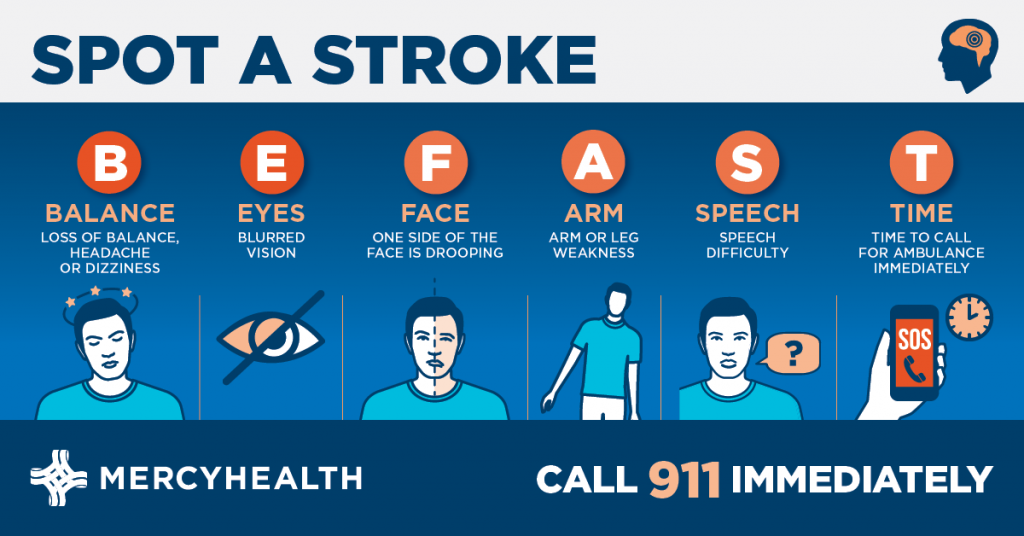Strokes are one of the top five killers in the United States, and yet many people do not know about stroke symptoms. However, knowing the risk factors, warning signs and how to respond can save a life, perhaps even your own.
Strokes are also a leading cause of serious, long-term disability. If you suspect a loved one is having a stroke, call 911 or take them to nearest emergency room as soon as possible.
A stroke, or brain attack, happens when the brain’s blood supply is blocked by a blood clot or damaged vessel, which stops your brain from getting enough oxygen. Since the brain is the command center of the body, having a stroke can affect your ability to talk, walk, read, write, think and see.
Nationwide, hemorrhagic strokes account for 13 percent of all strokes, yet are responsible for more than 30 percent of all stroke deaths. Ischemic strokes, which account for about 87 percent of all cases, happen when the brain does not get enough oxygen-rich blood. Usually this happens due to a blood clot blocking a major artery leading to the brain. And finally, transient ischemic attacks (TIAs), also called a mini stroke, are smaller, temporary blockages in the brain that can produce milder, stroke-like symptoms but may not leave lasting damage. However, TIAs are an important warning sign, as up to 40 percent of all people who suffer a TIA will go on to experience a full stroke.
Rapid diagnosis and treatment can minimize or even prevent the effects of a stroke. Unfortunately, people experiencing a stroke often do not recognize what is happening and delay medical treatment. That’s why it’s so important to know the signs and act quickly.
Risk Factors for Stroke
First, remember that the best time to treat a stroke is before it occurs. Your doctor can help control or treat risk factors, such as high cholesterol, high blood pressure, smoking, diabetes, physical inactivity, obesity, drug and alcohol abuse and disorders of the heart, arteries and blood. Other risk factors cannot be treated, but it is helpful to be aware of them:
- Age: The risk of stroke increases with age, almost doubling during each decade of life after age 55.
- Gender and race: Women, African Americans and Hispanic Americans have a higher risk.
- Family history: People with a personal or family history of stroke are also at greater risk.
Stroke Warning Signs
It is important to learn the signs of a stroke so you can take immediate action in an emergency. To recognize the signs of stroke, BE FAST.
B stands for balance: With a stroke, a person can experience a sudden loss of balance.
E stands for eyes: Ask the person if they can see out of both eyes. Loss of vision is a stroke symptom.
F stands for face: Ask the person to smile. If the person is experiencing a stroke, one side of the mouth may droop.
A stands for arms: Ask the person to raise both arms. Stroke will often cause one arm to drift downward.
S stands for speech: Ask the person to repeat a sentence. Stroke may cause speech to be slurred.
T stands for time: If you see signs of a possible stroke, immediately call 911 or take the person to the emergency room.

Learn more about the stroke care services we offer at Mercy Health in all our markets.







2 Comments
Post a CommentClaudia Mackendrick
I did learn a lot tonight. #4 under heart attack, I think this is what happened to me last week while out shopping. It came on suddenly as I got in the car. Super, super dizzy, then nauseated, then severe sweeting.Dr. David Greene
Thank you for the warming signs, and it will alert individuals before they get into worse situation and might save lives.